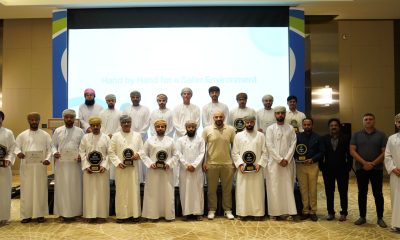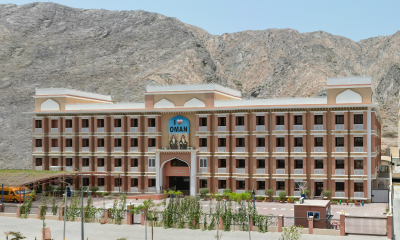Experts
Navigating the most severe downturn in decades

Let’s see how transformation program initiatives bring value to customers through an actual example. The Ivar Aasen field was discovered in 2008 in the North Sea in 112m of water and is operated by Det Norske. In discussing how we could best meet the customer’s needs, we chose to propose service delivery based on an integrated model that can assign human resources and skills within a dedicated project organization to deploy the best available technology through established workflows and processes.
In working well ahead of the project start date, it became much easier to integrate services and optimize the resources needed between the rig, the shore base in Trondheim, and the remote operations center in Stavanger. A unique collaboration model based on the colocation of Det Norske and Schlumberger project teams will enable a highly efficient approach to staffing levels through multiskilling, and an open reception to new fit-for-purpose technologies.
Among these, GeoSphere reservoir mapping technology has provided accurate well placement to increase footage in the payzone and mitigate drilling risks while a dedicated M-I SWACO laboratory helped ensure that drilling and completion fluids were compatible with the formations encountered.
Coupled with excellence in execution, the project yielded two of the fastest drilled and quickest completed wells in the public Rushmore database. On the faster of the two wells, the total saving enabled by this innovative approach and backed by the transformation program led to an almost halving of the time taken to drill and complete the well compared to the AFE budget.
Let’s now turn to our current outlook for both North America and the international Areas. In the US, the land rig count that breached 900 on $60-dollar WTI at the end of the second quarter quickly declined to a new low as commodity prices fell significantly lower. We now believe that a bottom well below the current low 700s is likely before the downturn ends with a 10-12 per cent decline by the end of the fourth quarter.
In this market, our approach has been to concentrate activity in core areas and for key customers while stacking equipment rather than operate at a loss. However, when we have decided to pursue work at less-than-commercial prices, we have viewed it as an investment decision, rather than as an attempt to simply buy share.
This has led us to move equipment and crews from basin to basin as we balance market share with margin and pursue new technology opportunities. We believe that this balance has helped ensure our strength in overall profitability in the North American market while continuing to maintain our overall infrastructure and long-term service capacity. In addition, we expect to be able to keep our margins above those of previous downturns.
In the current market, however, we also expect year-end product, software and multiclient sales to be weak and unable to offset seasonal weaknesses as we enter winter in the northern hemisphere. It has also become clear that any recovery in activity has been pushed out in time, although light tight oil production in North America is clearly on the decline.
There is a considerable inventory of drilled but uncompleted wells in unconventional resource basins that can rapidly be brought on production. As the price of WTI rises, these will be completed to add production before any significant rise in drilling activity is required.
We do not therefore expect to see any meaningful increase in service pricing traction until the vast pool of idle service company assets has been considerably reduced. Turning now to the international Areas, we have not been immune to significant pricing discussions with our customers, although when these have led to significant reductions we have generally been able to offset them to a certain degree through actions on cost management or through transformation initiatives.
As we approach the end of the year, we expect that year-end sales of completion products, software licenses and multiclient seismic data sets in all Areas will be weaker than usual and will fail to offset seasonally lower activity as the northern hemisphere winter sets in. Among the individual Areas, activity in the Middle East and in Russia remains robust, particularly in Saudi Arabia, the United Arab Emirates and Kuwait but operations in these and other Areas are challenged by significant pricing concessions, a changing revenue mix, and project delays that are combining to drive both revenue and margin lower.
-

 Banking & Finance2 weeks ago
Banking & Finance2 weeks agoOman Oil Marketing Company Concludes Its Annual Health, Safety, Environment, and Quality Week, Reaffirming People and Safety as a Top Priority
-

 Economy2 months ago
Economy2 months agoMaal Card: What Oman’s New National Payment Card Means for Everyday Users
-

 Events2 months ago
Events2 months agoOER Corporate Excellence Awards 2025 Honours Entities and Innovations in Oman
-

 News2 months ago
News2 months agoSheikh Suhail Bahwan, Chairman of Suhail Bahwan Group, Passes Away
-

 News1 month ago
News1 month agoOIG Appoints New CEO to Lead Its Next Chapter of Excellence
-

 Economy2 months ago
Economy2 months agoOman Unveils Official Omani Rial Symbol in Landmark Move to Boost Global Currency Presence
-

 News1 month ago
News1 month agoReport: How India & The Middle East Are Exploiting Immense Economic Synergies
-

 Uncategorized1 month ago
Uncategorized1 month agoOman’s ISWK Cambridge Learners Achieve ‘Top in the World’ and National Honours in June 2025 Cambridge Series




























You must be logged in to post a comment Login